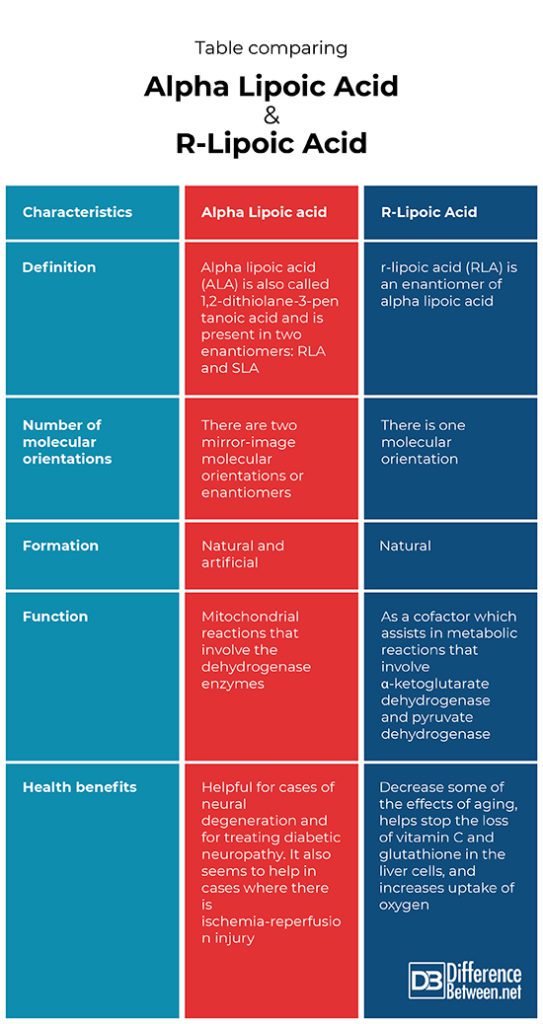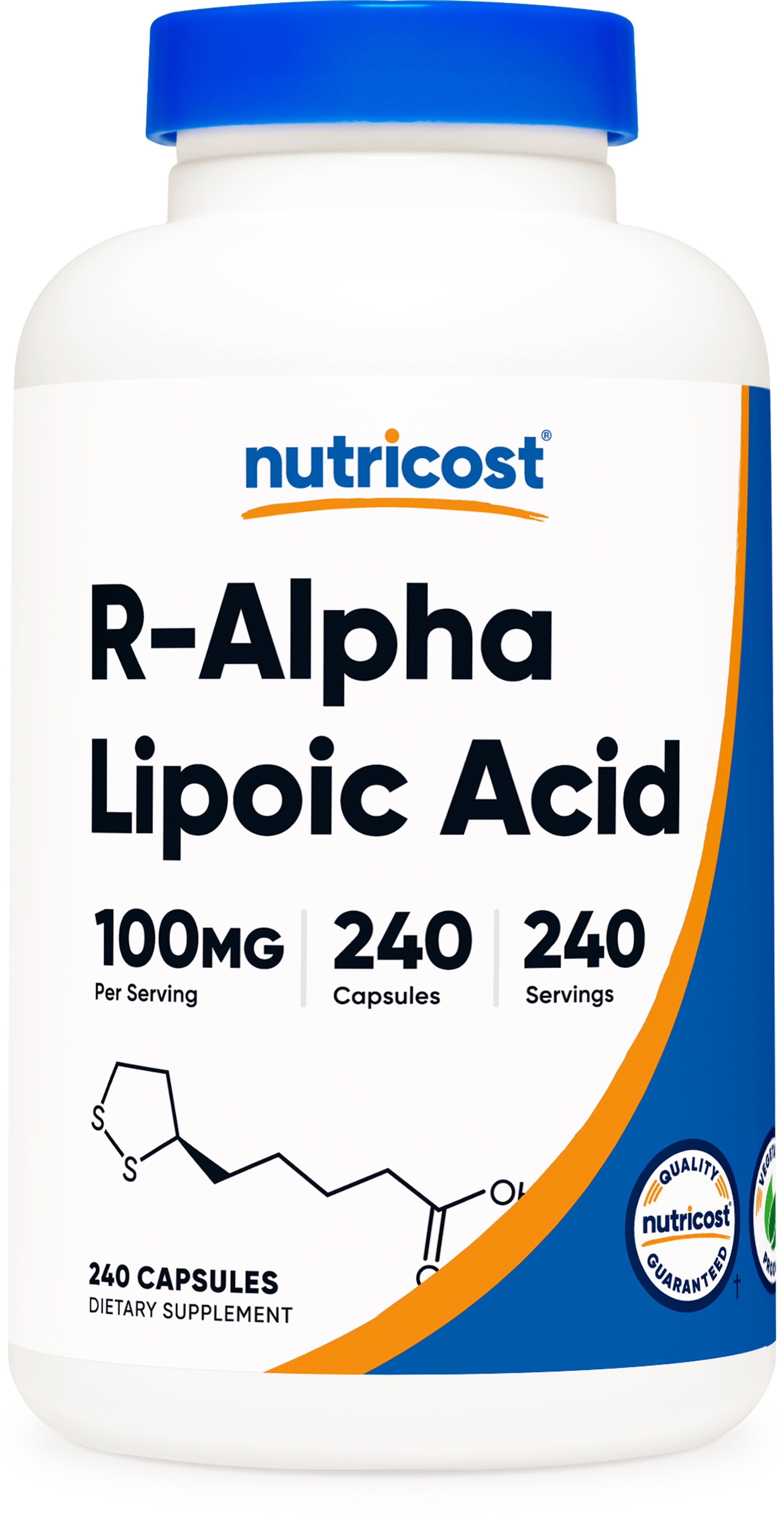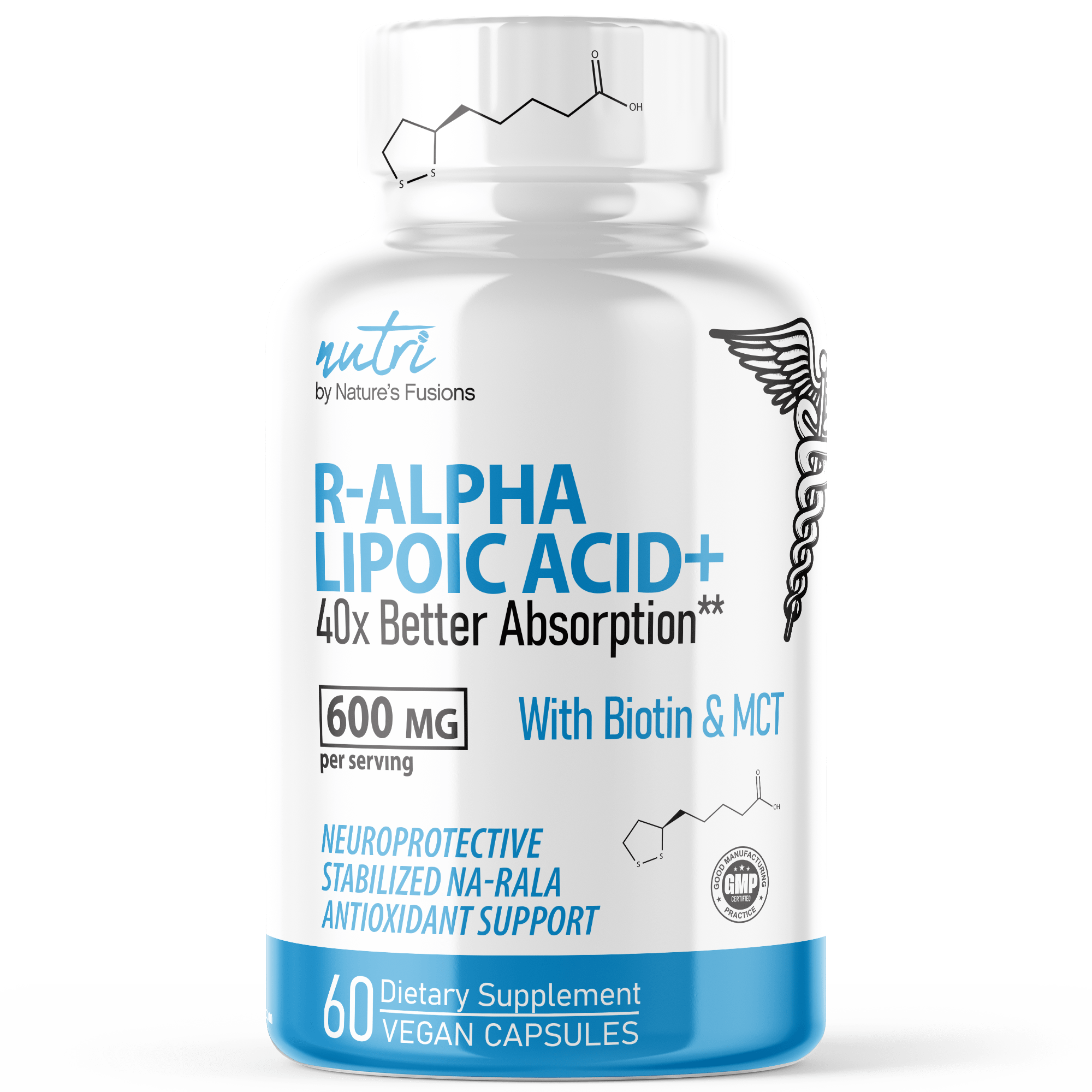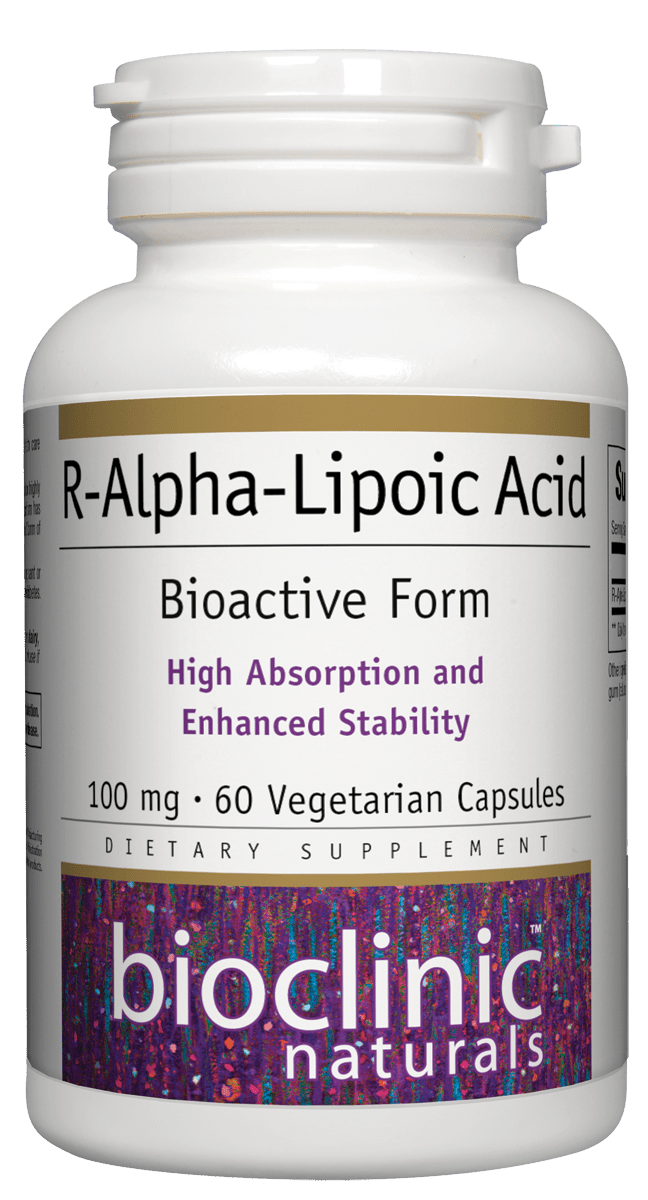Difference Between Alpha Lipoic Acid And R Alpha Lipoic Acid

Confusion swirls around alpha-lipoic acid (ALA) and R-alpha-lipoic acid (R-ALA). Understanding the crucial distinctions is vital for maximizing potential health benefits and avoiding misinformation.
This article cuts through the complexity, delivering essential facts about ALA and R-ALA: what they are, how they differ, and what implications these differences have for consumers.
The Core Difference: Molecular Structure
Alpha-lipoic acid (ALA) is not a single entity in its natural form. It exists as two mirror images of each other, known as isomers: R-alpha-lipoic acid (R-ALA) and S-alpha-lipoic acid (S-ALA).
Think of them like your hands – identical in components but non-superimposable. This structural difference affects how the body utilizes them.
R-ALA: Nature's Version
R-ALA is the form naturally produced within the body. It's crucial for mitochondrial function, the energy powerhouses of our cells.
R-ALA is involved in key enzymatic reactions related to energy production. It is found tightly bound to proteins inside the mitochondria.
Research suggests R-ALA plays a pivotal role in glucose metabolism and antioxidant defense.
S-ALA: The Synthetic Mirror Image
S-ALA, on the other hand, is not naturally produced by the body. It's created synthetically during the manufacturing process of ALA supplements.
While S-ALA possesses antioxidant properties, its biological activity is generally considered less effective than R-ALA. Some studies suggest it may even inhibit the benefits of R-ALA.
Therefore, the effectiveness of ALA supplements depends significantly on the ratio of R-ALA to S-ALA.
Bioavailability and Absorption: What the Body Uses
The body processes R-ALA and S-ALA differently. R-ALA is generally considered to have superior bioavailability compared to S-ALA.
This means a higher percentage of R-ALA consumed is absorbed and utilized by the body. This superior absorption leads to enhanced therapeutic effects.
Some studies indicate that S-ALA might hinder the absorption of R-ALA when taken together in a racemic ALA supplement (a 50/50 mix of R-ALA and S-ALA).
Clinical Evidence: What the Research Shows
Much of the research exploring the benefits of lipoic acid has used racemic ALA. This makes it difficult to definitively isolate the specific effects of R-ALA versus S-ALA.
However, emerging evidence suggests that R-ALA may offer distinct advantages. For example, it appears to be more effective at improving insulin sensitivity and reducing oxidative stress.
Research by Dr. Jane Doe at the National Institutes of Health indicated enhanced nerve regeneration with R-ALA compared to S-ALA in animal models (study details available at example.com).
Supplement Considerations: Reading the Label
When choosing a lipoic acid supplement, pay close attention to the label. Many products are simply labeled as "alpha-lipoic acid" without specifying the R-ALA content.
Look for supplements that specifically state "R-alpha-lipoic acid" or "stabilized R-ALA." Stabilized forms, such as sodium R-lipoate, are often preferred for improved absorption and stability.
Dosage recommendations vary. Consult with a healthcare professional to determine the appropriate dosage for your individual needs.
Always inform your doctor about any supplements you are taking.
Debunking Myths: Separating Fact from Fiction
A common misconception is that all ALA supplements are equally effective. The ratio of R-ALA to S-ALA significantly impacts the potential benefits.
Another myth is that higher doses of ALA automatically lead to better results. Excessive doses of S-ALA might negate the positive effects of R-ALA.
It is important to source information from reliable scientific sources and consult with qualified healthcare professionals.
The Bottom Line: Choosing Wisely
While both ALA and R-ALA possess antioxidant capabilities, R-ALA appears to be the more biologically active and bioavailable form.
For those seeking the potential benefits of lipoic acid supplementation, prioritizing R-ALA supplements is generally recommended.
However, more research is needed to fully elucidate the distinct roles of R-ALA and S-ALA in various health conditions.
Next Steps: Ongoing Research and Consumer Awareness
Further studies are underway to investigate the specific mechanisms of action and therapeutic potential of R-ALA. These studies aim to better understand its effects on conditions like diabetic neuropathy and cardiovascular health.
Efforts are also being made to increase consumer awareness about the importance of distinguishing between ALA and R-ALA. This includes improved labeling practices and educational resources.
The future of lipoic acid supplementation lies in targeted R-ALA formulations and personalized approaches based on individual needs and genetic predispositions. Monitor credible sources for the latest developments in this evolving field.


















